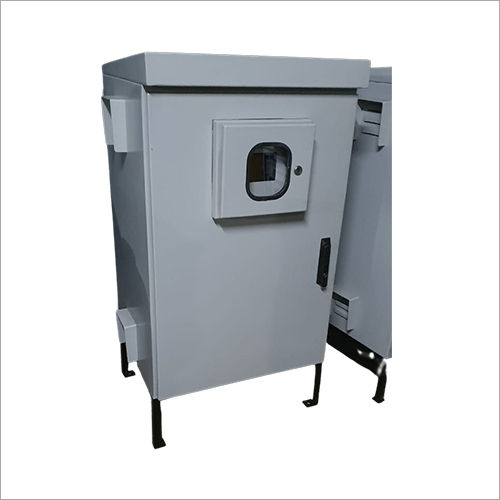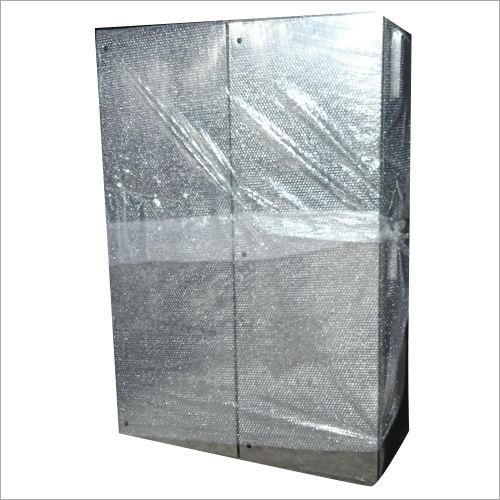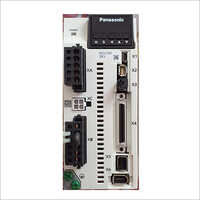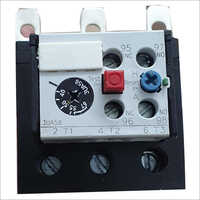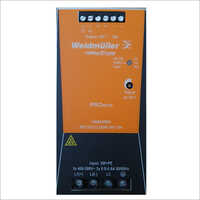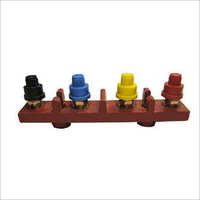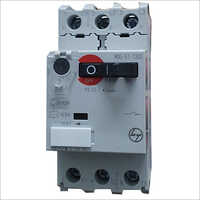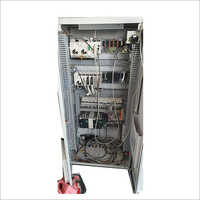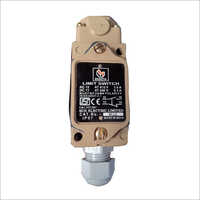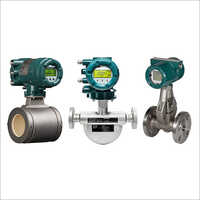Kolkata, India ![]() GST No.19BCBPR7038D1ZJ
GST No.19BCBPR7038D1ZJ
Call us now
08045802757Mild Steel Enclosure
95000 INR/Unit
Minimum Order Quantity : 20 Units
Delivery Time : 10 Days
Surface Treatment Painted
Protection Level IP66
Material Stainless Steel
Supply Ability 5500 Per Month
Payment Terms Cash Advance (CA)
Main Domestic Market All India
About this product
In a variety of applications, an enclosure or cabinet made of mild steel is used to store and safeguard electrical and electronic components. Mild steel, commonly referred to as carbon steel, is a frequently used material for enclosures because of its strength, longevity, and affordability.
The following are some essential qualities and traits of a mild steel enclosure:
1. Mild steel sheets are often shaped and welded together to make a solid and durable structure for building mild steel enclosures. Depending on the use and level of protection required, the steel thickness can change.
2. Protection: Electrical and electronic equipment is shielded from environmental elements like dust, dirt, moisture, and physical damage by mild steel enclosures. In order to provide ingress protection against water and other contaminants, they might be built with gaskets or seals.
3. Mild steel enclosures have a wide range of uses and can be tailored to meet particular application needs. To accommodate diverse components and mounting choices, they can be created in a variety of sizes, shapes, and configurations.
4. Finish: To increase their resistance to corrosion and improve aesthetics, mild steel enclosures are often coated with a protective coating like paint or powder coating. Depending on the environment in which the enclosure will be installed, the coating can be chosen.
5. Access and Security: To facilitate installation, maintenance, and troubleshooting of the internal components, mild steel enclosures may have doors, panels, or detachable covers. It is possible to include locking devices to increase security and stop unauthorised access.
6. Depending on the use and the available space, mild steel enclosures can be constructed for a variety of mounting choices, such as wall mounting, floor standing, or rack mounting.
7. Thermal management: To control internal temperatures and dissipate heat produced by the enclosed components, mild steel enclosures may include elements like ventilation, fans, or heat sinks. This depends on the particular application.
8. Mild steel enclosures may be created to comply with industry standards and laws governing electrical safety, including IP (Ingress Protection) ratings, NEMA (National Electrical Manufacturers Association) standards, or particular certifications like UL (Underwriters Laboratories) or CE (Conformite Europeenne).
Mild steel enclosures are frequently used to safeguard a variety of electrical and electronic equipment, including control panels, distribution boards, switchgear, junction boxes, and instrumentation cabinets, in industrial, commercial, and residential contexts. The level of protection needed, the environment, and the particular requirements of the application are some of the elements that influence the choosing of a mild steel enclosure.
Stainless Steel Enclosure
95000 INR/Unit
Minimum Order Quantity : 20 Units
Delivery Time : 10 Days
Surface Treatment Painted
Protection Level IP66
Paint Finishing High
Material Stainless Steel
Supply Ability 5500 Per Month
Payment Terms Cash Advance (CA)
Main Domestic Market All India
About this product
In a variety of applications, an enclosure or cabinet made of stainless steel is used to store and safeguard electrical and electronic components. It is made of stainless steel, a long-lasting material that resists corrosion and is appropriate for harsh settings.
The following are some essential qualities and traits of a stainless steel enclosure:
1. Due to their superior corrosion resistance, stainless steel enclosures are appropriate for both indoor and outdoor applications. Chromium is a component of stainless steel that creates an oxide coating on the surface to shield it from corrosion and rust.
2. Durability: Stainless steel is a strong, durable material that offers the enclosed components long-lasting protection. It is resistant to abrasive environments, high temperatures, and mechanical stress.
3. Stainless steel is known for its hygienic qualities, which make it appropriate for use in sectors like food processing, pharmaceuticals, and healthcare. It is non-porous, simple to clean, and bacterial growth resistant.
4. Protection Levels: Stainless steel enclosures can be made to comply with a variety of environmental protection requirements, including NEMA (National Electrical Manufacturers Association) standards and IP (Ingress Protection) ratings. This guarantees the enclosure's resistance to pollutants including water, dust, and sand.
5. Flexibility in design: Stainless steel enclosures can be altered to fit particular application needs. To accommodate varied components, mounting options, and access features, they can be built in a variety of sizes, shapes, and configurations.
6. Security: To prevent unauthorised access and safeguard priceless equipment, stainless steel enclosures can be fitted with locking mechanisms, hinges, and other security features.
7. Thermal management: To control interior temperatures and dissipate heat produced by the enclosed components, stainless steel enclosures may include ventilation, cooling fans, or heat sinks.
8. Stainless steel enclosures are attractive and professional-looking, making them ideal for situations where aesthetics are crucial.
9. Compliance: Stainless steel enclosures can be made to abide by applicable laws and industry requirements for electrical safety, including UL (Underwriters Laboratories) certifications, CE (Conformite Europeenne) compliance, and other relevant standards.
Industries include industrial automation, telecommunications, transportation, maritime, and oil & gas frequently use stainless steel enclosures. In difficult situations, they offer dependable and long-lasting protection for delicate electrical and electronic equipment. The choice of a stainless steel enclosure is based on requirements for corrosion resistance, environmental conditions, and particular application requirements.
Explore Additional Categories
Contact Us
 Our Products
Our Products 